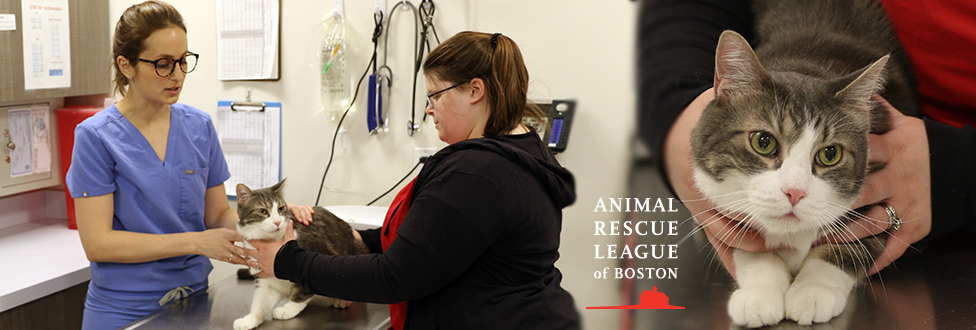ARL Caring for Several Diabetic Cats
Cases of diabetes rapidly rising nationally – link to pet obesity
Diabetes is the second most common endocrine disease (hyperthyroidism is the most common) in cats, and the Animal Rescue League of Boston (ARL) has seen several cats afflicted with the disease over the past year – recent statistics also indicate the number of cases are rapidly increasing.
The drastic increase can partly be attributed to the rise in pet obesity.
Webster, a 10-year-old male cat, was picked up as a stray in Malden, MA in late January, and had typical signs of living on the streets including dental disease and muscle wasting. However, his blood work revealed a glucose level of 349 – anything over 170 is considered high.
ARL’s shelter medicine staff continued diagnostic testing, instilled dietary changes and constantly monitored Webster hoping to rule out a diabetic diagnosis. However, a fructosamine test, which determines how the animal’s body is regulating blood glucose levels over a 2-3 week period, indicated that Webster’s body was not regulating properly and was properly diagnosed with diabetes.
The cat was placed into foster care, and is currently on a regimen of insulin injections twice a day, 12 hours apart, and after eating. Webster is also on a strict diet of wet and dry food specially formulated for managing diabetes.
Despite the diagnosis, Webster will have a good quality of life, his new owners will simply have to be diligent about follow-up veterinary care and ensuring insulin is administered as prescribed. Once his glucose can be regulated he will be ready to find his forever home!
Approximately half the cats diagnosed with diabetes can achieve remission if the disease is treated promptly – cats in remission may be able to stop insulin entirely as well.
Know the Signs
Diabetic symptoms vary and in addition to increased thirst and decreased activity, other signs include:
- Weight loss
- Change in litterbox habits
- Appetite swings
- Vomiting
- Unsteady gait
- Overall poor health
More than half the cats and dogs in the U.S. are overweight, and as long as pet obesity continues to be an issue, the number of diagnosed cases of diabetes in our pets will continue to rise. ARL encourages pet owners to strictly monitor their animal’s diets, limit treats and take action if a pet begins to gain or lose weight rapidly.

